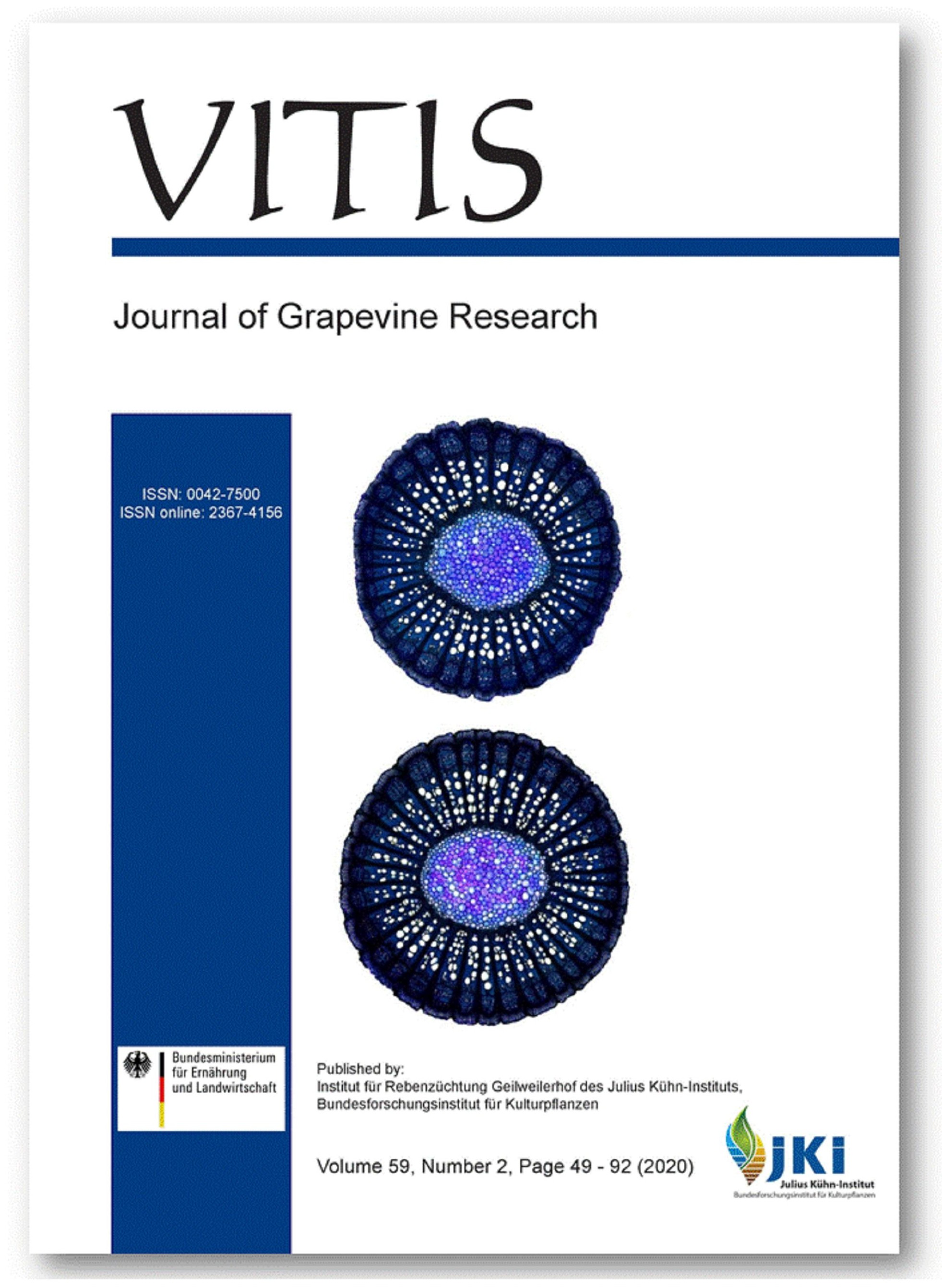Potassium fertilization in relation to downy mildew disease incidence in grape leaves
DOI:
https://doi.org/10.5073/vitis.2020.59.71-76Keywords:
potassium; downy mildew; phenols; phenolic acids and PAL enzyme.Abstract
Influence of different sources of potassium and their method of application was studied on incidence of downy mildew infection in grape leaves of 'Sharad Seedless' (syn: 'Kishmish Chorni'). The total phenolic content and individual phenolic acids were analysed from healthy and downy mildew infected leaves of 'Sharad Seedless' and the degree of downy mildew infection was well correlated with potassium content in the petioles. Different sources and method of potassium application had significant effect on Phenylalanine ammonia-lyase (PAL) enzyme activity and preformed phenols in healthy vines. Significant increase in PAL enzyme activity, total phenols and individual phenolic acids was registered with increase in disease severity. Magnitude of percent change in PAL enzyme activity and total phenolic content was highest in vines with maximum disease infection. Among the phenolic acids, o-Coumaric acid, p-Coumaric acid have a definite role in disease resistance. We could also observe the variation in disease severity in vines which received different sources of potassium which was supplied in different quantities whether through soil and/or through fertigation.
Downloads
Published
Issue
Section
License
The content of VITIS is published under a Creative Commons Attribution 4.0 license. Any user is free to share and adapt (remix, transform, build upon) the content as long as the original publication is attributed (authors, title, year, journal, issue, pages) and any changes to the original are clearly labeled. We do not prohibit or charge a fee for reuse of published content. The use of general descriptive names, trade names, trademarks, and so forth in any publication herein, even if not specifically indicated, does not imply that these names are not protected by the relevant laws and regulations. The submitting author agrees to these terms on behalf of all co-authors when submitting a manuscript. Please be aware that this license cannot be revoked. All authors retain the copyright on their work and are able to enter into separate, additional contractual arrangements.



